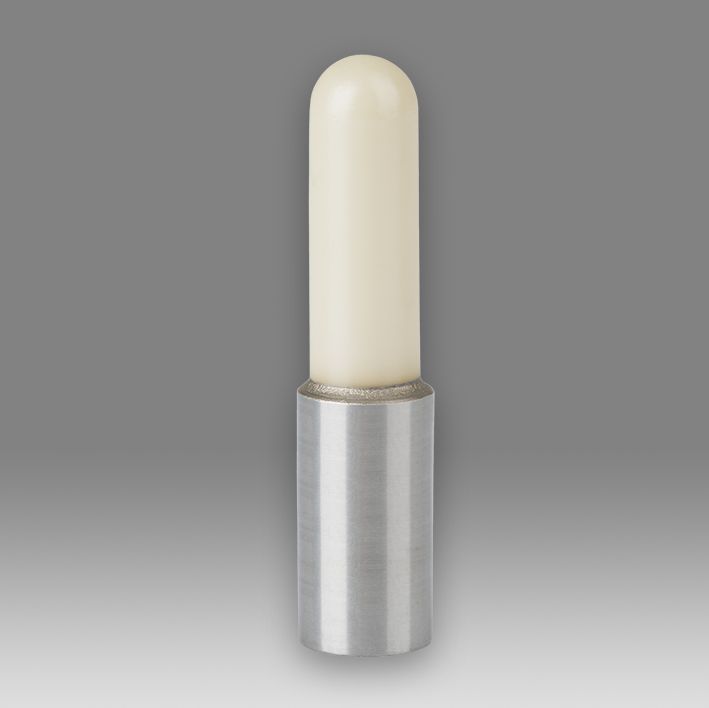Kyocera supports ISS with ceramic components
Kyocera Fineceramics Solutions GmbH supplies ceramic tubes for oxygen measurement in the international space station’s electromagnetic levitator expansion.
- Fine Ceramic Components
Kyoto/London - The Mannheim-based subsidiary of the Japanese Kyocera Group is reaching for the stars: from 2023, Kyocera Fineceramics Solutions GmbH will be supplying ceramic tubes for the extension of the Electromagnetic Levitator (EML) on the International Space Station (ISS). The ceramic products help to measure oxygen and are part of a new research facility that is constantly being expanded.
The Levitator is a 360 kg facility in the materials science laboratory in the Columbus module and was brought to the ISS in 2014 by the ATV-5 (automated transfer vehicle) "Georges Lemaître", an unmanned supply spacecraft. There the system was installed and commissioned by Alexander Gerst. He also accompanied the sample processing. The European Space Agency's (ESA)1 funding programme is planned to expand the EML to include an oxygen measurement and control system (EML OCS - EML Oxygen Sensing and Control System), which is expected to go into operation in 2023. This will allow additional measurements under a specifically adjustable oxygen atmosphere.

https://www.dlr.de/content/de/bilder/2018/2/alexander-gerst-am-schmelzofen-der-eml-anlage_30573.html
Kyocera supplies essential material for oxygen measurement
The additional extension of the system by the possibility of oxygen control (OCS) will include metallized and soldered ceramic tubes made of DEGUSSIT FZY from Kyocera Fineceramics Solutions GmbH. DEGUSSIT FZY is a special material that enables precise oxygen measurement at high temperatures due to its ion conductivity. This ionic conductivity can only be achieved through specific adjustment of the composition and the ceramic microstructure. Extensive tests of the assemblies were carried out in advance to ensure their usability and reliability under the extreme conditions of rocket launches and weightlessness.
Zirconium oxide doped with yttrium oxide (Y203) has a conductivity for oxygen ions at temperatures above 600°C. Solid electrolyte sensors with DEGUSSIT ceramic utilize this property. The zirconium oxide ceramic serves as a gas-tight separating layer between two gases with different oxygen concentrations. Equipped on both sides with electron conductors – for example, a platinum layer – oxygen ions migrate through the ceramic and create an electrical potential. In this way, the electrical voltage is measured, enabling the oxygen content of the sample gas to be calculated. This calculation is dependent on the difference of oxygen concentrations of the two gases. Air is often used as reference gas.
https://www.dlr.de/content/de/bilder/2014/4/ohne-behaelter-schmelzen-mit-dem-eml-an-bord-der-iss-ist-das-moeglich_17106.html
The EML in use
The EML uses electromagnetic fields to position suspended floating metal and semiconductor samples. It also allows the materials to be melted and various material data recorded at different temperatures. The process takes place in a vacuum or inert gas atmosphere. Without contact to a crucible wall, which would lead to measurement interference due to the contact between sample and crucible, or the influence of gravity, which for example causes convection and segregation processes, material data can be determined more precisely and the behavior of metal alloys and semiconductors in weightlessness can be studied. Samples can be melted at temperatures between 400 and 2000 °C. The material data are recorded with a high-speed camera and a pyrometer (radiation thermometer).

https://kyocera-solutions.de/
The EML was developed by Airbus Defence and Space and commissioned by the European Space Agency (ESA) and the space management department2 of the German Aerospace Center (DLR). The EML is controlled and monitored by the DLR Microgravity User Support Center (MUSC) in Cologne. Since its commissioning, the EML facility has been achieving valuable results in the field of materials science research and will continue to be supported by the clients ESA and DLR and extended by new functionalities.
Armin Kayser, Managing Director of Kyocera Fineceramics Solutions, is very pleased about the cooperation: “Being part of such a large and prestigious project fills us with pride. It shows that our hard and varied work in the field of ceramics is appreciated internationally and continues to contribute to such research”.
1 ESA Contract 21788/08/NL/BJ [EML (Electro-Magnetic Levitator) Phase B2/C/D Development] – Contract Change Notice 49 [EML OCS (Oxygen sensing and Control System) Phases C/D/E1 Development
2 DLR Space Management Contracts 50WP0505, 50WP0606, 50WP0808
The opinions expressed here are not to be understood as official opinions of the European Space Agency (ESA) or the German Aerospace Center (DLR).

